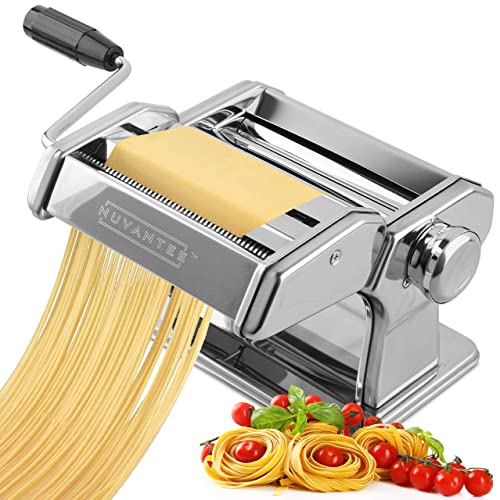Using a Pasta Machine to Make Rice Noodles: A Feasible Option?
Rice noodles are a versatile and popular ingredient in many Asian cuisines. They are commonly used in dishes like Pad Thai, Pho, and stir-fries. Traditional methods of making rice noodles involve a lengthy process of soaking, grinding, and steaming rice flour. However, with the abundance of kitchen gadgets available, home cooks often wonder if a pasta machine can be used as a shortcut for making rice noodles.
The Differences Between Pasta and Rice Noodles
Before exploring the possibility of using a pasta machine to make rice noodles, it is important to understand the key differences between the two. Pasta dough consists primarily of wheat flour and water, while rice noodles are made from rice flour and water. The gluten content in wheat flour gives pasta its characteristic chewy and elastic texture, whereas rice noodles are typically softer and more delicate.
Adapting Pasta Machines for Rice Noodle Making
While a pasta machine is designed specifically for pasta dough, it can be adapted for making rice noodles with a few adjustments. The first step is to prepare a rice flour-based dough by mixing rice flour with water. The ratio of rice flour to water may vary depending on the recipe, but a common guideline is to use one part rice flour to one part water.
Once the rice flour and water are mixed to form a dough, it can be rolled out using a pasta machine. The dough should be flattened to a thickness that suits the desired thickness of the rice noodles. Some pasta machines also come with attachments that can be used to cut the dough into different shapes, such as spaghetti or fettuccine. These attachments can be used to create rice noodles of varying widths.
Challenges and Considerations
While it is possible to use a pasta machine to make rice noodles, there are a few challenges and considerations to keep in mind. One challenge is the lack of gluten in rice flour, which can make the dough more fragile and prone to tearing. It may require some experimentation and practice to achieve the desired texture and consistency of the rice noodles.
Another consideration is the width of the noodle cutters on the pasta machine. Most pasta machines are designed for making Italian-style pasta, which typically has wider noodles. Rice noodles, on the other hand, are often thinner and more delicate. It may be necessary to find alternative methods for achieving the desired noodle width, such as using a knife or specialized rice noodle cutter.
Alternative Methods for Making Rice Noodles
If using a pasta machine proves challenging or impractical, there are alternative methods for making rice noodles at home. One option is to use a manual rice noodle press, which is specifically designed for making rice noodles. These presses usually consist of a metal or plastic body with interchangeable plates for different noodle widths.
Another option is to roll out the rice noodle dough by hand using a rolling pin. This method requires patience and precision to achieve the desired thickness and consistency of the noodles. It may also be helpful to use a ruler or guide to ensure consistent noodle width.
While a pasta machine can be adapted for making rice noodles, it may not be the most efficient or practical option. The key challenges lie in the lack of gluten in rice flour and the limited options for noodle width on most pasta machines. However, with some experimentation and skill, it is possible to achieve satisfactory results. Alternatively, using a specialized rice noodle press or rolling out the dough by hand may be more effective methods for making rice noodles at home.






